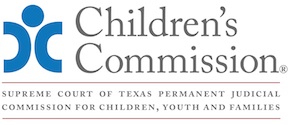C. School Stability
Special Issue: School is often a source of stability as well as a place for academic and social development of children and youth in foster care. If a child must be removed from his home or change placements, consider the potential impact on the child’s education and what efforts were made to keep the child in the same school, if possible. |
1. Fostering Connections
Congress passed the most sweeping child welfare law in a decade with the Fostering Connections to Success and Increasing Adoptions Act of 2008 (Fostering Connections Act). 42 U.S.C. §§ 620-629i; 42 U.S.C. § 653; and 42 U.S.C. § 670 et seq.[10] The Fostering Connections Act includes important provisions regarding the educational stability of youth in foster care, calling on child welfare agencies to keep the child in the same school any time the child's placement changes, if it is in the child’s best interest. If the child cannot remain in the same school, the child must be promptly enrolled in a new school. The legislation also increases the amount of federal funding that may be used to cover education-related transportation costs and requires child welfare agencies to work with local education agencies to ensure educational stability. Passage of the Fostering Connections Act highlights the importance of improving educational outcomes of children and youth in foster care across the nation.
a. Education Stability Provisions of the Fostering Connections Act
• Proximity to school – Each placement decision for a child in foster care must take into account the appropriateness of the child’s current educational setting and the proximity to the school in which the child is enrolled. 42 U.S.C. § 675(1)(G)(i).
• Coordinate with Local Education Agencies (LEA) – The child welfare agency must coordinate with LEAs to ensure that the child can remain in the school where the child is enrolled at the time of each placement. 42 U.S.C. § 675(1)(G)(ii)(I). For further detail, please see U.S. Departments of Education and Health & Human Serv., Admin on Children (2014) joint letter, available at http://www2.ed.gov/about/inits/ed/foster-care/fostering-connections-letter.doc.
• Immediate enrollment and timely transfer of records – Alternatively, if remaining in that school is not in the child’s best interests, the agencies must ensure that the child is immediately enrolled and that all educational records are provided to the new school. 42 U.S.C. § 675(1)(G)(ii)(II).
• Transportation – Transportation costs, including expenses related to transport to extracurricular activities, may fall under foster care maintenance payments. For further detail, please see U.S. Dep’t Health & Human Serv., Admin. on Children, Youth and Families, CWPM § 8.1B Q27 (2007), available online at www.acf.hhs.gov/cwpm/programs/cb/laws_policies/laws/cwpm/policy_dsp.jsp?citID=36#1803.
In recognition of the need for agency coordination, DFPS and the Health and Human Services Commission (HHSC) must collaborate with TEA to develop policies and procedures to ensure that the needs of foster children are met in every school district. Tex. Fam. Code § 266.008(d).
2. Educational Stability Plan
To meet the requirements of the Fostering Connections Act regarding education stability, DFPS must develop, in accordance with 42 U.S.C. § 675, a plan to ensure the educational stability for children in foster care. Tex. Fam. Code § 264.1072.
3. School Choice
A student who was enrolled in a primary or secondary public school before the student entered the conservatorship of DFPS and who is placed at a residence outside the attendance area for the school or outside the school district is entitled to continue to attend the school in which the student was enrolled immediately before entering conservatorship until the student successfully completes the highest grade level offered by the school at the time of placement without payment of tuition. The student is entitled to continue to attend the school regardless of whether the student remains in the conservatorship of DFPS for the duration of the student’s enrollment in the school. Tex. Educ. Code § 25.001(g).
If a student who is in the conservatorship of DFPS is enrolled in a primary or secondary public school, other than the school in which the student was enrolled at the time the student was placed in the conservatorship of DFPS, the student is entitled to continue to attend that school without payment of tuition until the student successfully completes the highest grade level offered by the school at the time of enrollment in the school, even if the child’s placement is changed to a residence outside of the attendance area for that school or outside the school district. The student is entitled to continue to attend the school regardless of whether the student remains in the conservatorship of DFPS for the duration of the student’s enrollment in the school. Tex. Educ. Code § 25.001(g-1).
Special Issue: Although Tex. Educ. Code § 25.001(g) and Tex. Educ. Code § 25.001(g-1) allow a child to remain in his or her school at the time of placement into foster care, it does not address related transportation issues, including costs of transportation and the person responsible for providing it. The presumption is that the child’s caregiver will be responsible for any costs related to the transportation, although some school districts may work with the caregiver to find a solution to the transportation challenge. |
4. McKinney-Vento
A child who is awaiting foster care placement meets the federal McKinney-Vento Homeless Assistance Act definition of homeless and is entitled to attend the school that the child attended when permanently housed or the school in which the child was last enrolled, with transportation and other services provided by the district. 42 U.S.C. §§ 11431-11435.[11]
In Texas, eligibility determinations for homeless services under McKinney-Vento are made on a case by case basis. In general, if a child is placed in an emergency shelter or transitional living center, was pushed out of his or her home, or doubled up with others, that child is likely to be eligible for McKinney-Vento services.[12] For further detail, please see the Texas Homeless Education Office Fact Sheet on Foster and Substitute Care.[13]
